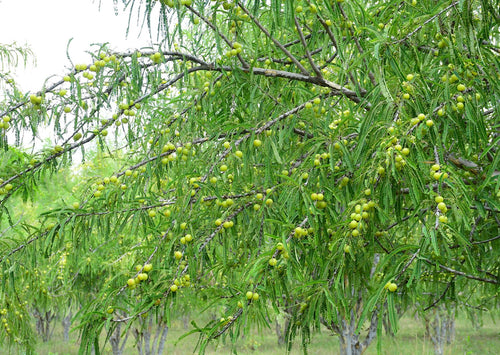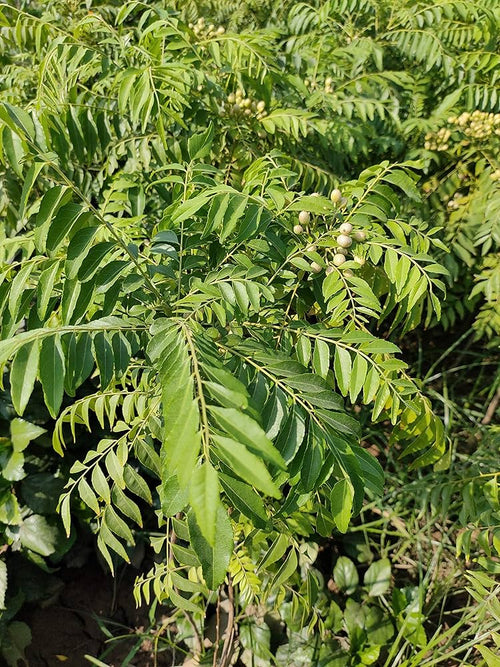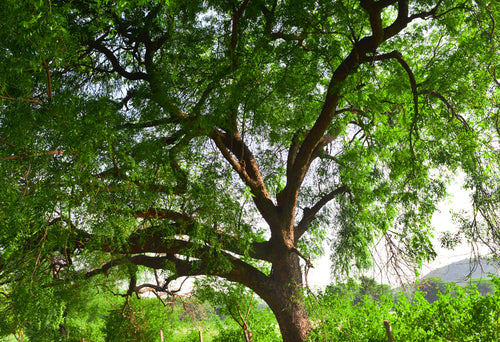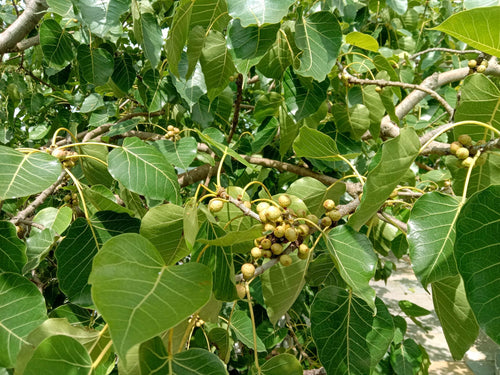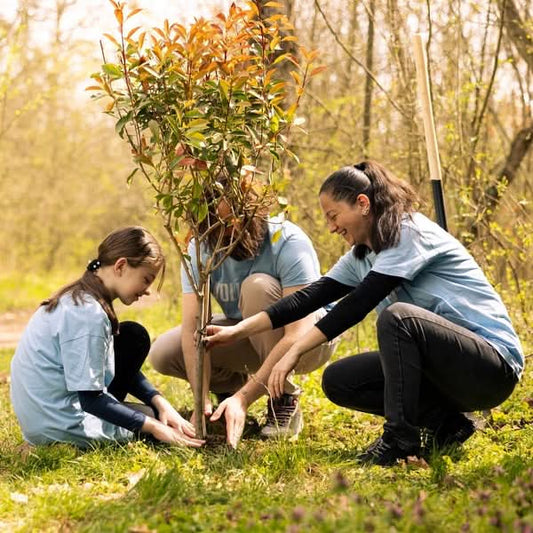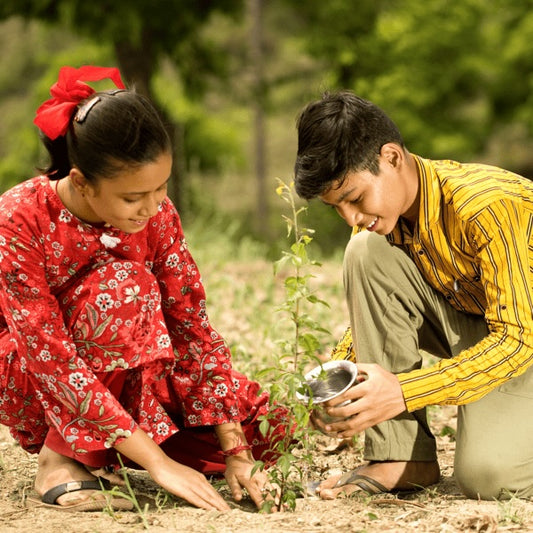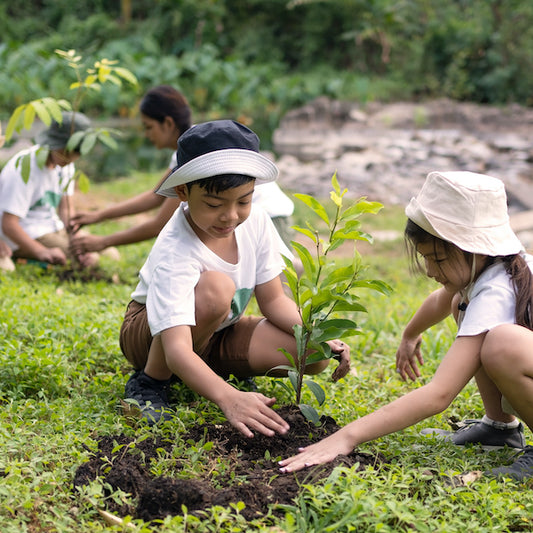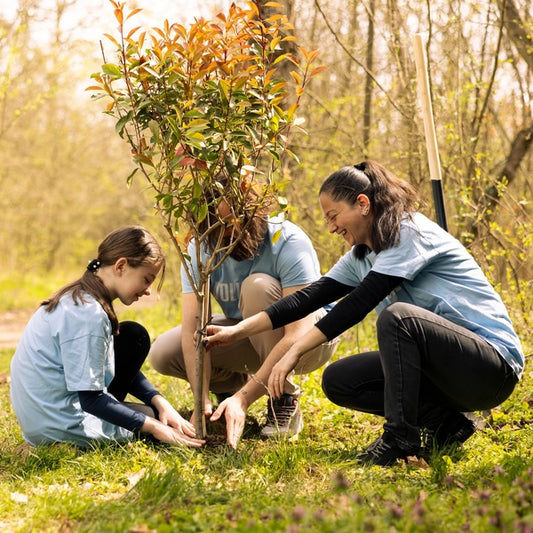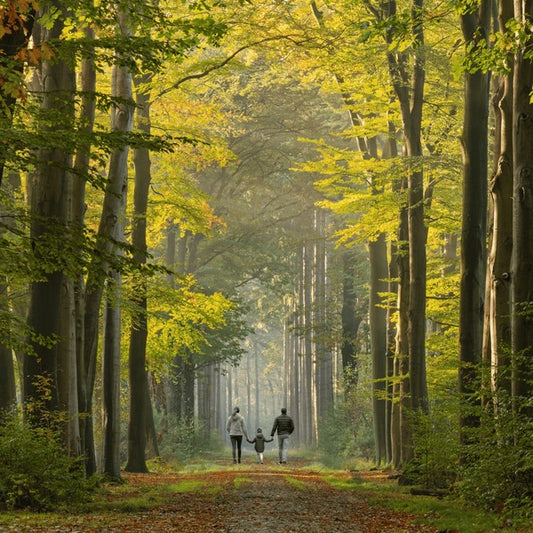"A Breath of Fresh Air: Cloudnine Hospitals' Commitment to Urban Forests"
Cloudnine Hospitals is committed to enhancing the quality of life for its employees and the community through its innovative tree plantation initiativ Read more
Project Update 2

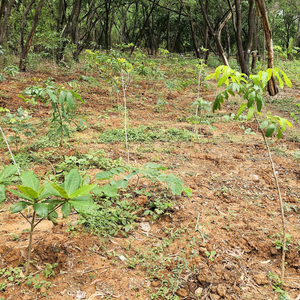
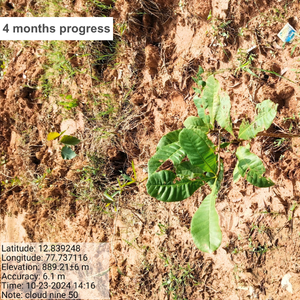
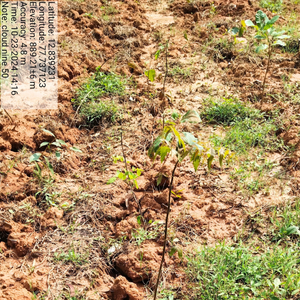
Project Update 1

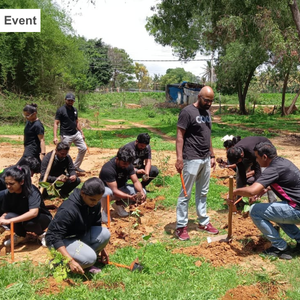
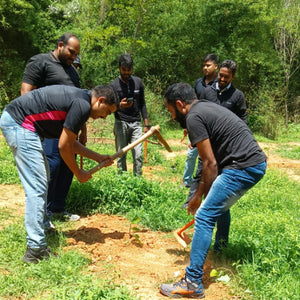
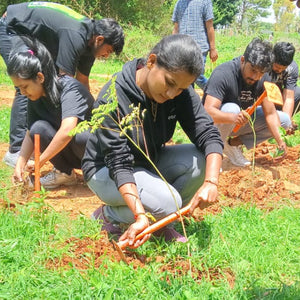
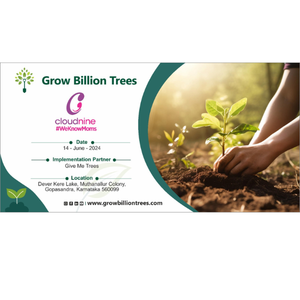
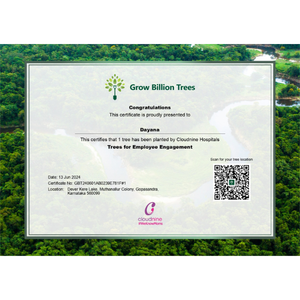

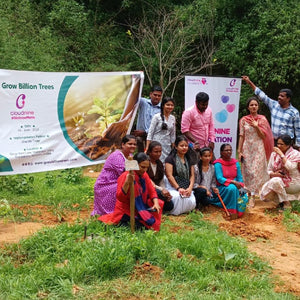
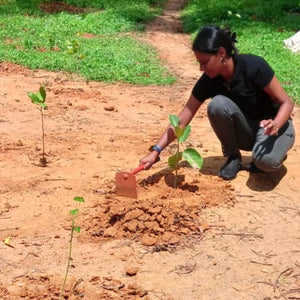

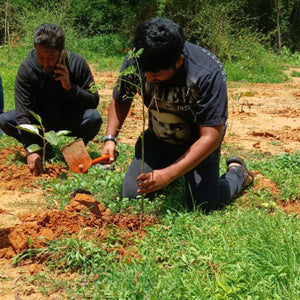

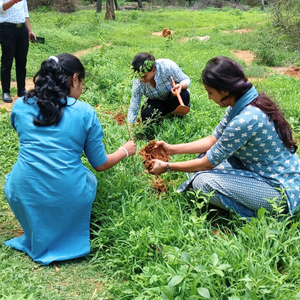
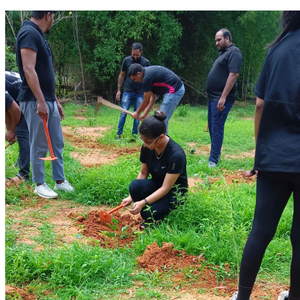
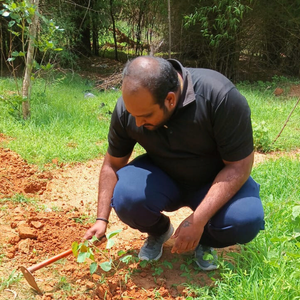
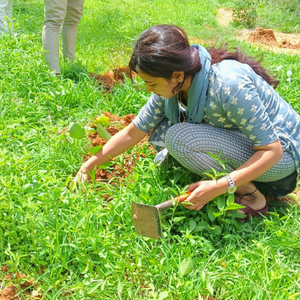
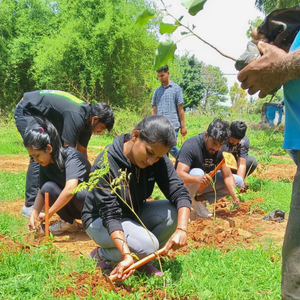
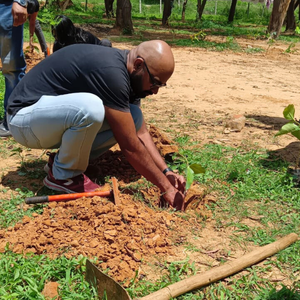
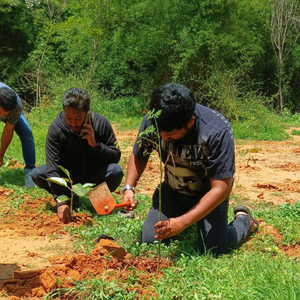
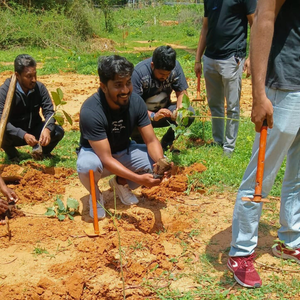
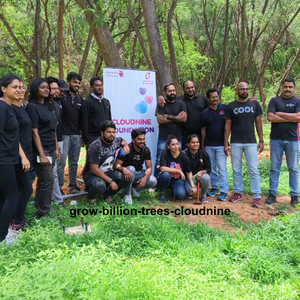
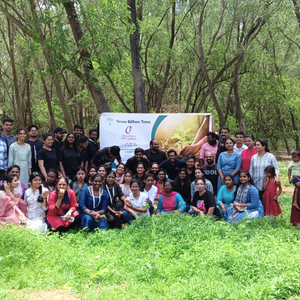
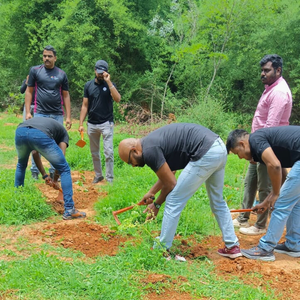
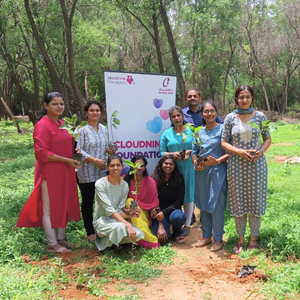
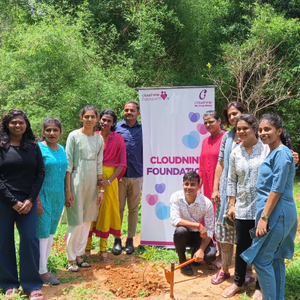
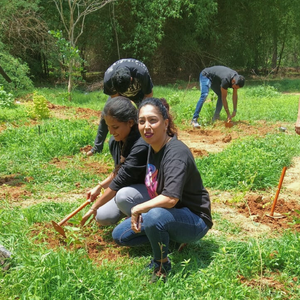
Digital Forest
Forest with 50 Trees planned
Want to plant your tree now?
Plant a Tree @ 299Trees Planted
"A Breath of Fresh Air: Cloudnine Hospitals' Commitment to Urban Forests"
Cloudnine Hospitals is committed to enhancing the quality of life for its employees and the community through its innovative tree plantation initiative, which embraces the urban forest concept. This initiative engages employees in hands-on tree planting events, promoting teamwork and environmental stewardship while transforming city landscapes into lush, green havens. By participating in these activities, employees connect with nature, fostering mindfulness and well-being. Cloudnine’s dedication to sustainability is evident in its efforts to create urban forests that improve air quality, provide shade, and support biodiversity. Through this green journey, Cloudnine empowers its employees to take pride in their contributions, cultivating a healthier, greener future for the community, one tree at a time.
Project Planning & Execution
No of Trees: 50 trees
Plantation Location: Dever Kere Lake, Muthanallur Colony, Gopasandra, Karnataka
Plantation Date: 14th June 2024
Name of Species: Avala, Karanj, Pipal, Badam, Kaju, Arjun, and Neem
Species Selection & Its Benefits:
The species selected for Cloudnine Hospital's urban forestry initiative were carefully chosen to align with the local ecosystem and maximise ecological benefits. The focus was on planting a mix of native, shade-providing, and fruit-bearing species, including Avala, Karanj, Pipal, Badam, Kaju, Arjun, and Neem to support biodiversity, offer habitats for wildlife, and contribute to the sustainability of urban environments.
Avara, Karanj, Pipal, Badam, Kaju, Arjun, and Neem are valuable plant species known for their diverse health and environmental benefits. Avala is often used in traditional medicine for its anti-inflammatory properties. Karanj is known for its use in natural pest control and skin treatments.
Pipal is considered sacred, improves air quality and has medicinal uses for asthma and digestive issues. Badam (almond) and Kaju (cashew) are rich in nutrients, promoting heart and brain health. Arjun is widely used in Ayurvedic medicine to support heart health, while Neem is a powerful natural antiseptic with uses in skin care, dental care, and agriculture. Together, these species support ecological balance and human well-being.
These species were chosen not only for their environmental benefits, such as improving air quality, preventing soil erosion, and enhancing water retention, but also for their ability to provide shade, reduce urban heat, and offer food sources for local communities. This thoughtful selection ensures that the trees serve both ecological and social purposes, creating a lasting positive impact on the urban landscape.
Beneficiaries Details
-
Target Population: Employees, stakeholders, and local community members of Karnataka
-
Age Group: All age groups focus on adults to seniors
-
Gender: Inclusive of all genders
- Social & Economic Status: Open to all social and economic backgrounds, emphasizing community involvement
Planting Methodology and Its Advantages
Urban Forestry:
An urban forest is a network of trees, shrubs, and vegetation strategically planted in urban areas to enhance biodiversity, improve air quality, reduce the urban heat island effect, and provide green spaces for community well-being. It helps mitigate climate change by absorbing carbon dioxide, promotes mental health through accessible green areas, and supports local wildlife by creating habitats. Urban forests play a vital role in building resilient, sustainable cities that benefit both the environment and the people who live in them.
Advantages of Urban Forestry
-
Climate Regulation and Cooling Effect: Urban forests help mitigate the urban heat island effect by providing shade and cooling through transpiration, lowering temperatures in cities, reducing the need for air conditioning, and conserving energy.
-
Improved Air Quality: Trees absorb pollutants like carbon dioxide, nitrogen oxides, and particulate matter, leading to improved air quality and reducing the risk of respiratory illnesses in urban areas.
-
Stormwater Management and Flood Prevention: Urban forests improve the soil’s ability to absorb and retain water, reducing stormwater runoff, preventing flooding, and promoting groundwater recharge, thus helping manage water resources efficiently.
-
Soil Erosion Control: The deep root systems of trees prevent soil erosion, especially in areas with heavy rainfall or steep slopes, stabilizing the land and reducing soil loss in urban environments.
-
Aesthetic and Recreational Value: The transformation of unused spaces into green zones adds aesthetic value to the area and provides employees and local communities with recreational spaces, making the workplace more enjoyable.
-
Enhanced Community Engagement and Well-being: Urban forests provide accessible green spaces where communities can engage in recreational activities, improving mental health, reducing stress, and fostering a sense of environmental stewardship among residents and employees.
-
Increased Property Value: Properties located near urban forests or green spaces tend to have higher market values, benefiting local property owners and increasing the overall appeal and livability of the area.
-
Noise Reduction: Urban forests act as natural sound barriers, reducing noise pollution and creating quieter, more peaceful surroundings.
Activities During Tree Plantation
The tree plantation drive at Dever Kere Lake, Muthanallur Colony, Gopasandra, Karnataka, was marked by active employee participation, fostering a strong sense of environmental responsibility and teamwork. The event was carefully structured to ensure smooth execution and meaningful engagement.
In preparation for the plantation, saplings were carefully placed and positioned for optimal growth. Employees actively took part in planting native and fruit-bearing trees, deepening their understanding of sustainable practices and the ecological benefits of urban greening. Their hands-on involvement created a more immersive and fulfilling experience.
The plantation drive concluded with a reflection session, allowing participants to appreciate their contributions towards a greener environment. The initiative reinforced Cloudnine Hospital’s commitment to sustainability, employee engagement, and corporate environmental responsibility.
Conclusion Elements
Impact
Direct Impact
|
Parameters |
Values |
References |
|
No. of Trees Planted |
50 |
|
|
Green Cover (Acres) |
0.15 |
|
|
Carbon Sequestration Potential (KG) |
20 |
Small to medium-sized trees can sequester around 10–48 kilograms (22–106 pounds) of CO₂ annually. https://onetreeplanted.org/blogs/stories/how-much-co2-does-tree-absorb |
|
Carbon Sequestration by 50 mature trees ( Tons/year) |
1 Tons |
No. of Trees x Carbon Sequestration by 1 mature tree per year |
|
Carbon Credit Equivalent |
1 |
One carbon credit is equivalent to one tonne of carbon dioxide or the equivalent amount of another greenhouse gas. |
|
Carbon Footprint of an avg Indian Citizen (Tons/Year) |
1.8 |
|
|
Offsets Annual Carbon Footprint of (Adults) |
1 |
Carbon offset by 50 mature trees per year / Carbon Footprint of an avg Indian Citizen per year |
*This impact analysis is forward-looking (An urban-forest project matures in 3-5 years)
Indirect Impact
Community Impact
-
Improved Public Health: By improving air quality and reducing urban heat, the project indirectly contributes to better public health. The presence of green spaces encourages outdoor activities, which can reduce stress levels, promote mental well-being, and decrease the incidence of respiratory diseases.
-
Environmental Awareness: Involving communities in urban forestry raises awareness about environmental conservation and promotes sustainable practices in daily life.
-
Employee Morale: The initiative fostered a sense of pride and connection among employees, strengthening team bonds and their alignment with the company’s values.
-
Inspiration for Change: By showcasing the potential of urban forestry, the project has encouraged other organisations and local communities to undertake similar initiatives.
-
Cultural Shift: The initiative instilled a mindset of sustainability and environmental care among participants, creating advocates for green practices in their personal and professional lives.
Environmental Impact
-
Carbon Sequestration: The trees planted through Cloudnine Hospital's urban forestry initiative absorb carbon dioxide, acting as carbon sinks and helping mitigate climate change by reducing greenhouse gas emissions.
-
Soil Health Improvement: The tree planting initiative enhances soil health by enriching it with organic matter, improving soil fertility and structure, which supports the growth of surrounding vegetation.
-
Erosion Prevention: Tree roots help stabilise the soil in urban areas, preventing erosion caused by wind and water, while safeguarding nearby properties and infrastructure from potential damage.
-
Biodiversity Conservation: By creating green spaces, the initiative supports local biodiversity, providing habitats for various species, pollinators, and beneficial insects, and enhancing the ecological balance in urban areas.
-
Water Cycle Regulation: The urban forestry project helps regulate the water cycle by improving water retention in the soil, recharging groundwater levels, and reducing surface runoff, leading to a more balanced and sustainable urban environment.
-
Microclimate Regulation: Trees planted through this initiative moderate temperature extremes, reduce wind speeds, and increase humidity, creating a favourable microclimate for both the community and the urban ecosystem.
Achievements
SDG Goals Achieved through Urban Forestry
-
SDG 3: Good Health and Well-Being – Cloudnine Hospital's urban forestry initiative enhances air quality and creates green spaces that support physical and mental well-being. The presence of trees in school environments promotes stress relief and encourages outdoor learning and play, fostering a healthier lifestyle for children and the wider community.
-
SDG 5: Gender Equality – By encouraging inclusive participation in urban forests, this initiative supports women’s involvement in sustainable farming and economic empowerment.
-
SDG 6: Clean Water and Sanitation – Trees planted as part of the initiative aid in water conservation by boosting groundwater recharge, reducing surface runoff, and improving soil moisture retention. Cloudnine Hospital contributes to sustainable urban water systems through strategic afforestation.
-
SDG 7: Affordable and Clean Energy – By mitigating the urban heat island effect, Cloudnine Hospital’s tree plantation helps reduce ambient temperatures, lowering the demand for air conditioning and promoting energy efficiency through natural cooling.
-
SDG 8: Decent Work and Economic Growth – The initiative creates green employment opportunities in nursery operations, plantations, and long-term maintenance, contributing to local economic growth and sustainable livelihoods.
-
SDG 9: Industry, Innovation, and Infrastructure – Cloudnine Hospital integrates sustainable urban forestry into community and infrastructure planning. The use of native species and community involvement promotes environmental innovation and urban resilience.
-
SDG 10: Reduced Inequalities – The plantation was inclusive, engaging employees from diverse backgrounds in a shared environmental mission. By developing accessible green spaces within schools, Cloudnine Hospital promotes environmental equity and encourages broader community participation.
-
SDG 11: Sustainable Cities and Communities – Cloudnine Hospital’s efforts directly contribute to more sustainable and liveable cities by increasing urban green cover, supporting biodiversity, and improving air quality.
-
SDG 12: Responsible Consumption and Production – Through careful species selection and long-term sustainability planning, Cloudnine Hospital promotes responsible use of natural resources and long-term environmental stewardship.
-
SDG 13: Climate Action – The initiative actively contributes to climate change mitigation by enhancing carbon sequestration and expanding green cover, which helps reduce greenhouse gas emissions in urban areas.
-
SDG 15: Life on Land – By planting native and fruit-bearing trees, the initiative enhances urban biodiversity, supports pollinators and local wildlife, and strengthens ecological health in the region.
-
SDG 16: Peace, Justice, and Strong Institutions – Through inclusive community involvement and school-based participation, Cloudnine Hospital fosters environmental awareness, responsible citizenship, and collaborative decision-making for sustainable development.
-
SDG 17: Partnerships for the Goals – The success of the initiative was driven by collaboration with partners such as Grow Billion Trees and local stakeholders. Cloudnine Hospital demonstrates the power of partnerships in driving impactful environmental action and community engagement.
ESG Achieved through Urban Forestry:
-
Environmental Impact: Cloudnine Hospital’s urban forestry initiative significantly enhances environmental sustainability. By planting diverse tree species, the company boosts biodiversity, creates habitats for wildlife, and supports local ecosystems. The trees act as carbon sinks, reducing CO2 levels and mitigating climate change. Additionally, the initiative improves urban climate resilience by regulating temperatures, reducing the heat island effect, and enhancing water retention, ensuring long-term ecological health for future generations.
-
Social Impact: Cloudnine Hospital’s urban forestry initiative fosters community engagement and well-being by encouraging local participation in tree planting and environmental awareness. The green spaces created improve air quality, promote physical activity, and enhance public health. The project generates job opportunities in tree planting and maintenance while promoting social equity by ensuring access to green spaces for all, including marginalised groups. Additionally, the project fosters women’s employment by involving them in various stages of plantation and maintenance, empowering them with sustainable livelihood opportunities. These efforts build a more inclusive, resilient, and sustainable community.
-
Governance Impact: Cloudnine Hospital demonstrates strong leadership and commitment to sustainability through its urban forestry initiative. The company ensures transparency and accountability by effectively communicating project plans and outcomes to stakeholders. By collaborating with environmental organisations and local communities, it amplifies the impact of its efforts. This approach aligns with best governance practices, achieving environmental and social goals while promoting long-term sustainable growth.
Building Communities
One of the most impactful outcomes of Cloudnine Hospital’s urban forestry initiative was the sense of unity and collaboration it cultivated. By involving employees, local communities, and volunteers, the project became a collective mission to create sustainable urban green spaces, fostering a shared commitment to a greener future.
-
Empowering Communities: Participants became active contributors, gaining knowledge about urban forestry practices and taking ownership of the initiative. This empowerment strengthened their connection to the environment and reinforced their role as environmental stewards.
-
Fostering Partnerships: The project brought together diverse stakeholders, including Cloudnine Hospital, Grow Billion Trees, and local communities, highlighting the value of collaboration in achieving environmental and social goals.
-
Creating a Ripple Effect: As communities experienced the benefits of urban forestry, their enthusiasm inspired others to adopt similar practices, amplifying the initiative's positive impact across the region.
This initiative demonstrates that environmental sustainability thrives when rooted in collective effort. It’s not just about planting trees—it’s about planting hope, collaboration, and a shared vision for a healthier and greener future.
Commitment by Grow Billion Trees
-
Ensuring Tree Survivability: GBT prioritises native species, continuous monitoring, and soil health improvement using organic fertilisers. These efforts ensure sustainable growth and benefit communities.
-
Transparency & Accountability: GBT provides detailed reports on tree growth, survival rates, and carbon benefits, using geo-fencing and regular updates to maintain transparency and effectiveness.
-
Sustainable Plantation Efforts: GBT implements projects that balance environmental, social, and economic goals, addressing issues like urban heat islands and degraded farmlands. These efforts promote ecological balance, livelihoods, and long-term climate resilience.
-
Enhancing Ecosystem Health: By selecting native species and creating diverse habitats, GBT enhances biodiversity and ecosystem resilience, ensuring long-term ecological health and supporting wildlife.
-
Long-Term Impact: GBT’s initiatives tackle environmental challenges, foster climate resilience, and promote sustainable development while reducing carbon footprints.
Acknowledgment
We at Grow Billion Trees extend our heartfelt gratitude to all those who have contributed to the success of the urban forestry initiative across Bengaluru. This project, which combines environmental sustainability with employee engagement, would not have been possible without the support and collaboration of our dedicated employees, local authorities, and partners. Their collective efforts in planting and nurturing over 50 trees are helping create a greener and more resilient future for urban communities. We are thankful for their commitment to fostering biodiversity, improving air quality, and promoting a sustainable future.
To Cloudnine Hospital, we sincerely thank you for your dedication to sustainability and employee engagement. Your innovative approach to urban forestry has laid the foundation for a greener, more resilient future in Bengaluru. We sincerely acknowledge Cloudnine Hospitals for their valuable support in promoting tree plantation and environmental sustainability. Their initiative contributes greatly to improving air quality, enhancing biodiversity, and creating greener, healthier communities. These efforts build a more inclusive, resilient, and sustainable community. Together, we have created a legacy that will continue to benefit urban communities and contribute to a sustainable tomorrow.
To Our Ground Partners and Volunteers: Your expertise, dedication, and passion for environmental sustainability have been crucial to the success of Cloudnine Hospital’s urban forestry initiative. Through your collaborative efforts, we have made meaningful strides in creating greener urban spaces and promoting biodiversity across Bengaluru. Your contributions have not only enhanced the environment but also fostered community engagement and awareness. Together, we are building a more sustainable future, and we look forward to continuing our partnership in creating a greener, healthier world for all.
Thank you for your unwavering support and commitment.
Closing Remarks
We are proud to have embarked on Cloudnine Hospital's journey of environmental sustainability through its urban forestry initiative in Bengaluru. This project has not only enhanced urban greenery but has also fostered a sense of community engagement and environmental stewardship. It highlights the power of collaboration, where every contribution, big or small, brings us closer to a healthier, more sustainable future.
As we look ahead to the continued success of this initiative, we are committed to expanding our efforts and inspiring others to join us in creating lasting positive change. Together, we are laying the foundation for a world where urban sustainability, community empowerment, and responsible practices thrive.
Thank you to everyone who has been part of this meaningful endeavour. Let’s continue working together to make a difference for today and future generations.
Trees for Corporates
Trending
Most Popular
1. Urban Forest Healthcare Benefits
At Cloudnine Hospitals, we know that a healthy environment means healthier people! Our urban forest initiative isn’t just about planting trees; it’s about nurturing wellness. These green spaces reduce air pollution, enhance air quality, and provide patients and staff with a natural, calming environment. Trees absorb harmful pollutants and offer a serene atmosphere that promotes healing. By creating urban forests, Cloudnine is planting the seeds for a healthier community—because who says hospitals should only be about medicine? Sometimes, the best prescription is a little bit of nature!
2. Employee Engagement in Urban Forests
tree planting! Employees from different departments join forces to plant trees in our urban forest initiative, bonding over their shared mission to make the city greener. It’s more than just digging holes—it’s about creating a sustainable future while connecting with nature. After a day of tree planting, employees don’t just walk away with a sense of accomplishment but with a little extra spring in their step!
3. Mental Health Benefits of Urban Forests
At Cloudnine Hospitals, we take mental health seriously—and our urban forests are here to help! Research shows that green spaces can reduce stress, improve mood, and boost overall mental well-being. So, we’re planting more than just trees; we’re planting tranquility. These leafy retreats offer patients, visitors, and staff a peaceful place to unwind amidst the hustle and bustle of urban life. Cloudnine’s urban forest initiative is a reminder that sometimes the best therapy comes from Mother Nature herself. Who knew that mental health could be this refreshing?
4. Climate Action through Urban Forests
Cloudnine Hospitals is stepping up in the climate action game with its urban forest initiative. Trees are nature’s superheroes, and we’re planting them to fight against carbon emissions and global warming. By absorbing CO2 and releasing oxygen, these urban forests are our way of giving back to the planet. Plus, our staff gets to be part of this green mission, planting trees that will stand tall for years to come. Climate change might be a big problem, but with Cloudnine’s urban forests, we’re making sure nature’s got our back!
5. Urban Forests for Clean Air
cleaner air leads to healthier lives. Cloudnine’s urban forests are helping everyone breathe easier—because good health starts with good air!
6. Biodiversity in Urban Forests
Cloudnine Hospitals isn’t just growing trees—we’re growing ecosystems! Our urban forest initiative focuses on planting native species that promote biodiversity in urban environments. These green havens provide shelter for birds, bees, and other wildlife, transforming the city into a thriving natural habitat. And let’s not forget the benefits for our employees and patients—they get to enjoy the beauty and serenity of nature without leaving the city. Cloudnine’s urban forests are proof that hospitals can play a vital role in preserving biodiversity right in the heart of urban areas.
7. Community Engagement through Tree Planting
Cloudnine Hospitals is more than just a healthcare provider—we’re a community builder! Our urban forest initiative brings together employees, patients, and local residents to create green spaces that benefit everyone. It’s a chance for the whole community to roll up their sleeves, plant some trees, and take action for the environment. These forests provide shade, cleaner air, and a better quality of life for all. At Cloudnine, we believe that when the community thrives, so does healthcare—and our urban forests are helping to make that happen!
8. Sustainable Healthcare with Urban Forests
better health for people and the planet. Cloudnine’s commitment to sustainability shows that healthcare and environmental stewardship go hand in hand!
FAQ
What are the benefits of tree plantation near hospitals?
Tree plantation near hospitals creates a calming environment that supports patient recovery, reduces stress, and improves air quality. At Cloudnine Hospitals, we believe that green spaces play a crucial role in patient well-being. Trees help filter pollutants, offer shade, and reduce noise, contributing to a serene atmosphere. They also promote biodiversity and create natural spaces for staff and visitors to relax, further enhancing overall health and wellness.
How does Cloudnine Hospitals participate in tree plantation?
Cloudnine Hospitals actively engages in tree plantation initiatives to enhance urban greenery and support environmental sustainability. We understand the positive impact green spaces can have on health, which is why we incorporate tree planting programs around our hospital premises and participate in larger community-driven projects. By doing so, we not only contribute to patient well-being but also promote a healthier ecosystem for future generations.
Why is urban forest important for healthcare facilities?
Urban forests near healthcare facilities are vital for improving the overall well-being of patients, staff, and visitors. At Cloudnine Hospitals, we recognize the benefits of these green spaces in reducing urban heat, filtering pollutants, and offering areas for relaxation and stress relief. Urban forests also support biodiversity, making the surrounding environment healthier and more resilient. We advocate for greener surroundings as part of our commitment to holistic healthcare.
What role does Cloudnine play in sustainable healthcare practices?
Cloudnine Hospitals prioritizes sustainability by integrating eco-friendly practices into our operations, including tree plantation and reducing environmental impact. We are committed to creating green spaces around our facilities, contributing to urban forests, and actively supporting reforestation projects. By promoting sustainability in healthcare, we aim to reduce our carbon footprint and build a healthier planet for future generations.
How do trees improve air quality around hospitals?
Trees act as natural air purifiers by absorbing pollutants, trapping dust particles, and producing oxygen. At Cloudnine Hospitals, we believe that planting trees around our facilities significantly improves air quality, benefiting both patients and staff. Cleaner air reduces respiratory issues and enhances overall health, making green spaces an essential component of our healthcare approach. Our tree plantation initiatives are aimed at fostering a healthier and more sustainable environment.
How does Cloudnine promote patient wellness through greenery?
At Cloudnine Hospitals, we understand the healing power of nature. We incorporate greenery into our hospital landscapes to create a soothing environment for patients. Studies show that exposure to green spaces reduces stress, anxiety, and recovery time. Our tree plantation efforts enhance this natural healing process by providing calm and visually appealing surroundings, which ultimately contribute to better patient outcomes.
Why are green spaces important in urban areas?
Green spaces in urban areas, including urban forests, are crucial for maintaining environmental balance, improving air quality, and enhancing community well-being. At Cloudnine Hospitals, we support urban greening initiatives because they offer a reprieve from the concrete jungle, making cities more livable. These spaces also provide areas for recreation and relaxation, promote biodiversity, and mitigate the effects of climate change.
How do urban forests benefit communities?
Urban forests play a vital role in fostering healthy, sustainable communities. Cloudnine Hospitals believes that these green spaces are essential for reducing pollution, offering recreational areas, and supporting mental well-being. Trees in urban forests also help regulate temperature, combat the urban heat island effect, and provide homes for wildlife, contributing to a balanced and thriving urban ecosystem.
How does Cloudnine engage employees in environmental initiatives?
At Cloudnine Hospitals, we encourage our employees to participate in environmental initiatives such as tree plantation drives. These activities promote a sense of community, foster environmental awareness, and improve workplace wellness. By involving our team in tree planting and other green projects, we aim to inspire a deeper connection to sustainability, both at work and beyond.
How does Cloudnine Hospitals contribute to a sustainable future?
Cloudnine Hospitals is committed to creating a sustainable future through eco-conscious practices, including tree plantation, reducing waste, and minimizing our carbon footprint. We participate in urban forest projects and advocate for green spaces around healthcare facilities. Our sustainability initiatives are designed to improve environmental health, promote well-being, and ensure that future generations can thrive in a cleaner, greener world.
- Choosing a selection results in a full page refresh.
- Opens in a new window.


